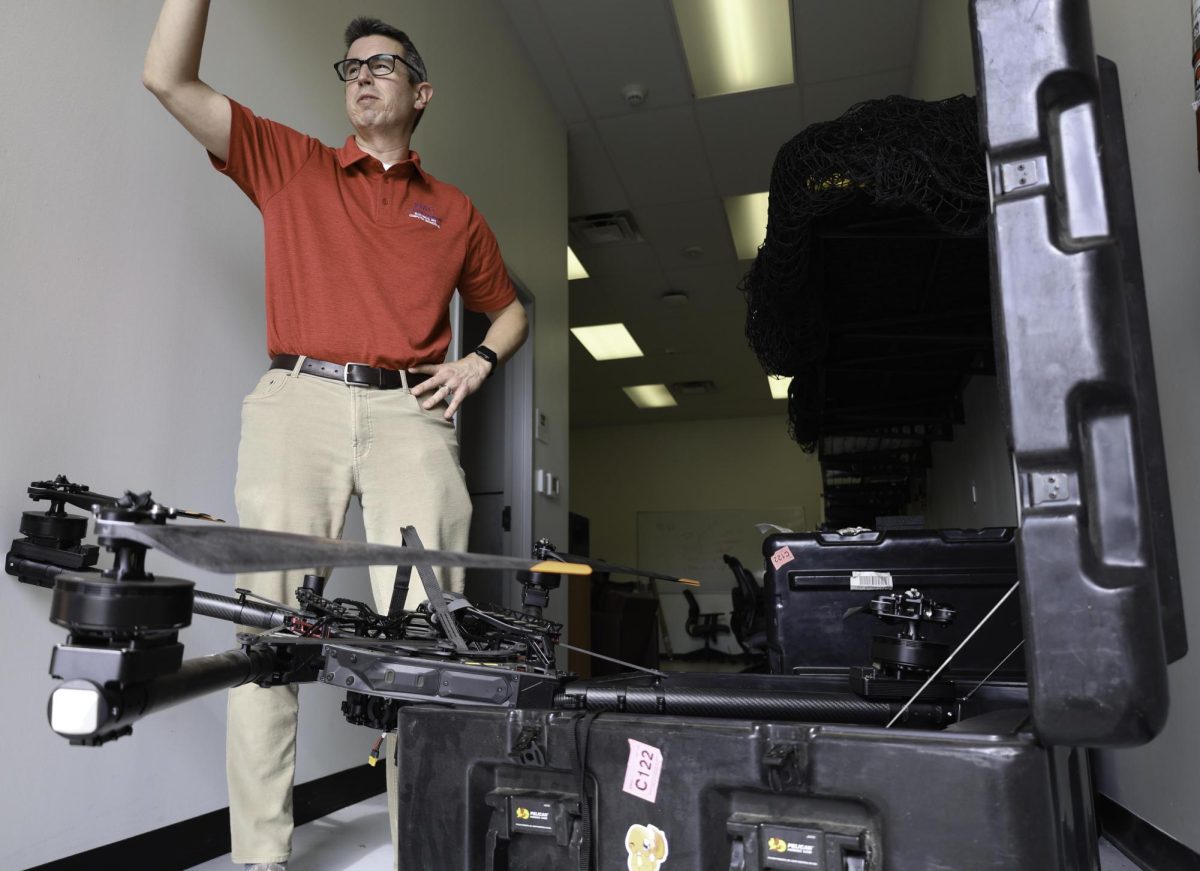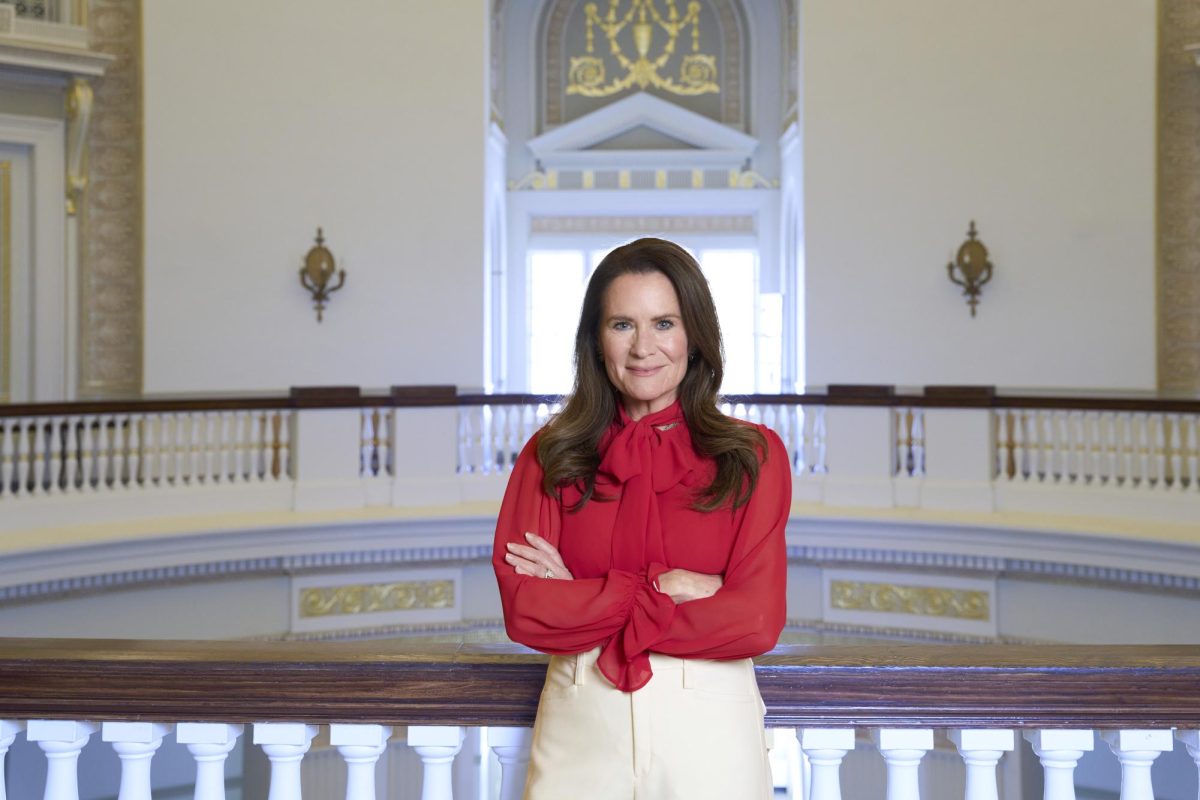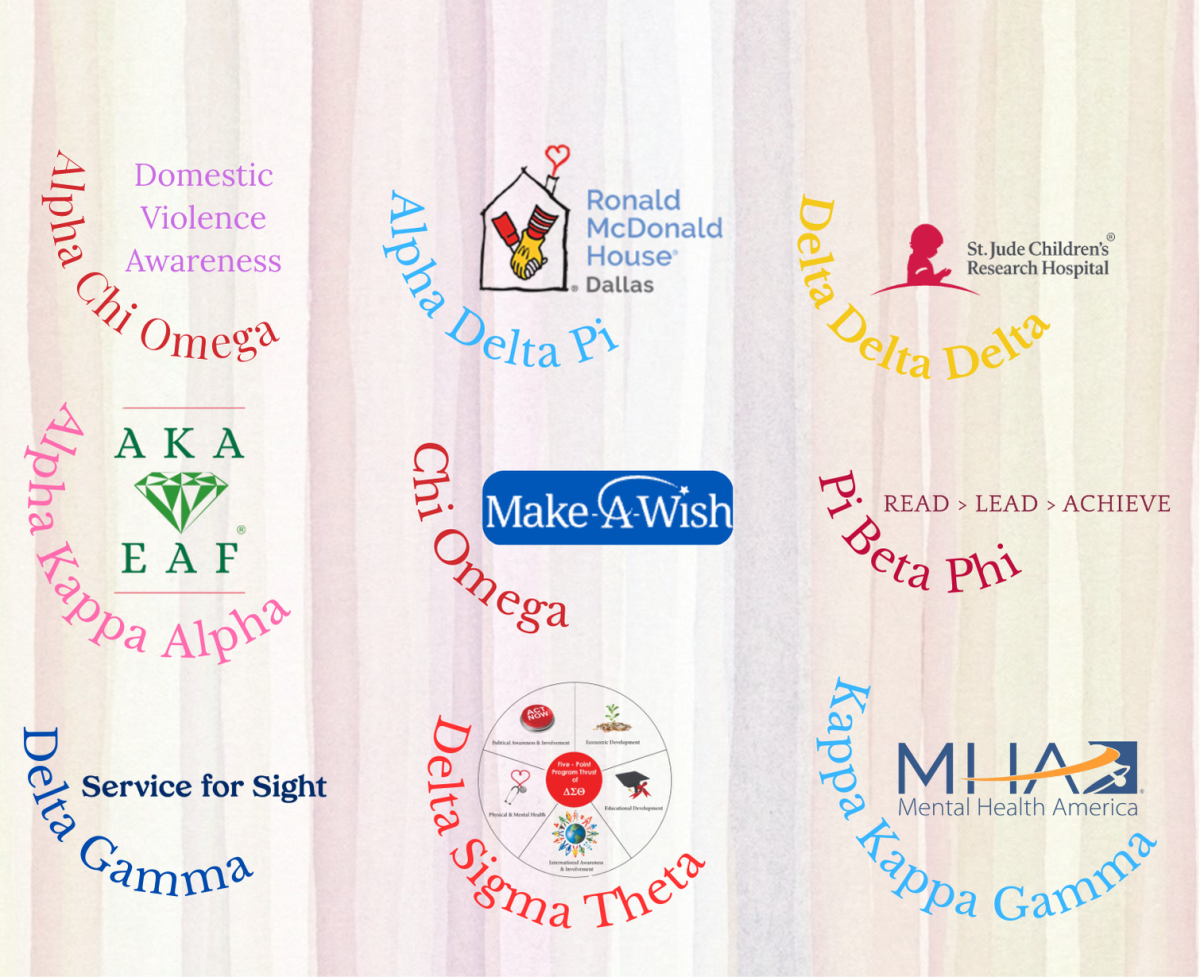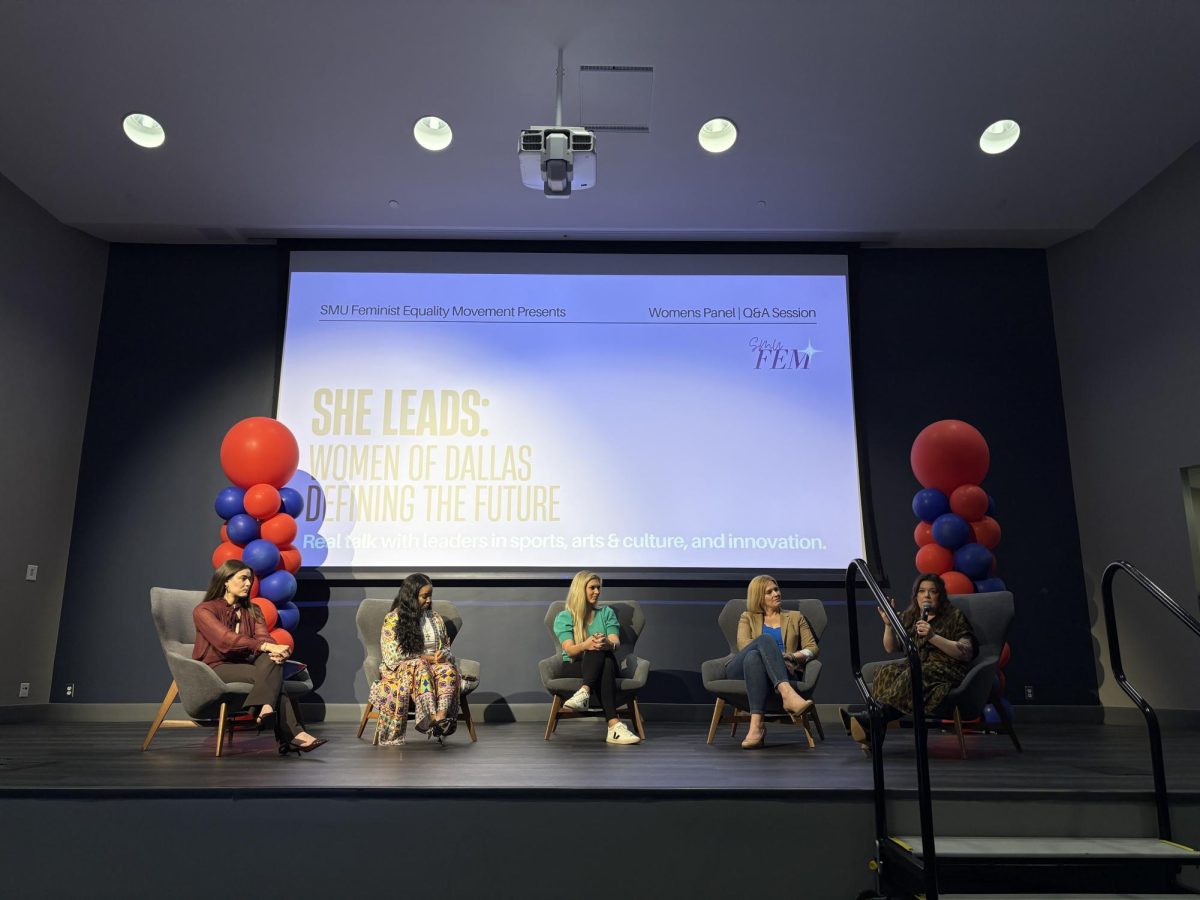“This is the captain’s chair,” said Justin Rarick, pulling it out and sitting down at his desk before beginning to type in his password—with his toe.
The 28-year-old DFW native works in the Volunteer Services Department at Texas Scottish Rite Hospital for Children (TSRHC), a place that is a second home for Rarick and a leader in orthopedic research.
Walking out of his department, Rarick begins the tour of Scottish Rite, navigating through the halls. “Tom, Tina, Trista, Theodore. Got to show off my turtles,” said Rarick as he passes through a waiting room, pointing out a fish tank against the wall and introducing turtles he named as a child.
Rarick was born with one full-length leg. His other leg ends with his foot at about knee height. One arm ends before the elbow with one finger; the other arm is missing. He is, as he says, one in a million; he was simply born that way. At only two months old, Rarick was admitted to Scottish Rite, a 92-year-old institution that specializes in pediatric orthopedics. “I met Justin when he was about 2 years old. He was a really spunky little guy,” Dr. Tony Herring, chief of staff emeritus at TSRHC, said. “We provided him with prostheses; everything was geared to help him get around, and help him use his feet.”
From about age 3 until age 18, Rarick visited the hospital’s Prosthetics and Orthotics Department, being fitted for prostheses and undergoing therapy. First, he would come for casting, or a mold of his leg. Next, he would come for the fitting to make sure the prosthetics leg would not rub him anywhere, and would be comfortable to wear all day. The third step was physical therapy to learn how to walk with the new prosthesis and what to do should he fall. Therapy continued with occupational therapy, which teaches children with Rarick’s type of abnormalities how to do everyday things with their prostheses, such as typing with toes, and recreational therapy, or sports therapy, because what do children want more than to be considered “normal,” just like their peers? “The institution (TSRHC) focuses on the whole child, and helping the child become whole,” said Don Cummings, a certified prosthetist at TSRHC.
Those years of repeated visits mean that the doctors and staff members at Scottish Rite form exceptionally deep and close relationships with their patients. “As some of the kids have grown into adults, I now know them as friends and have even had a few return to the hospital so they’re now co-workers and professional peers,” said Cummings. “Rarick is one of those kids.”
Since 2012, he has worked at Scottish Rite as a volunteer services coordinator. He was drawn back to a place that, in his experience, chooses to focus on the whole child, not just the medical condition. Rarick says. Through Scottish Rite, he participated in summer camps, hospital activities and the Annual Amputee Ski Trip to Winter Park, Colo., on several occasions. The trip takes fourteen teenage patients to spend a week at the National Sports Center for the Disabled. “There you get to see them in real life; how they learn to do stuff like skiing and snowboarding,” said Dr. Herring about the ski trip. Rarick puts it simply: Scottish Rite chooses to focus on the whole child, not just the medical aspect.
Walking through the halls of the Prosthetics and Orthotics Department, Rarick points out the yellow bars attached to the walls throughout the department. “They put those in for me. I would be walking and trying new prosthetics and they noticed I’d get tired walking up and down the hall, so they put the yellow bars in so I could stop and rest,” Rarick said, pulling off his prosthetic leg and resting his own, now shorter leg on the bar.
Up until he turned 18, Rarick visited the hospital getting new prostheses and staying involved in the Scottish Rite community. “As I’d grow I’d have to get a new one once a year, sometimes twice a year—for free. When I turned 18, I had to go to an outside prosthetics manufacturer, and I realized how expensive they are.”
Texas Scottish Rite Hospital for Children is more than just a nice children’s hospital, with staff who love kids and enjoy making differences in someone’s life. What makes TSRHC different, what enables them to provide the purest form of medical care, is that it charges its patients nothing. Nothing. The mission of the hospital is simple: treat the child with his or her needs first in mind, no matter what the financial position of the family might be.
Scottish Rite relies primarily on fundraising and donations. “The hospital has been very blessed by our fundraising efforts and the generosity of others,” Dr. Herring said. “We work hard and are very dedicated. Everyone knows the mission, what to get done, when it comes to the kids.”
It was not until the last couple years that the hospital began billing a family’s third party insurance—if they had it. “If they don’t, we still don’t care—the kids are taken care of either way,” said Ashley Givens, senior director of special events.
The hospital holds around 100 to 150 fundraising events per year—events like Treasure Street, Clay Shoot and KidSwing. These fundraising events brought in just over $3 million in revenue. Scottish Rite will also often receive checks from an event hosted to benefit it. One example Givens gave was Presley’s Promise, a golf tournament, held by the family of a patient, to give back to TSRHC for all its help in treating their daughter. Events like Presley’s Promise and contributions, gifts and grants make up a significant amount of Scottish Rite’s revenues; the hospital’s 2010 Form 990 shows around $16.5 million, not including noncash contributions. However, the largest portion of TSRHC’s revenue comes from royalties received from patents developed by the hospital, some $110 million.
Rarick puts it all into perspective: “Imagine if this place wasn’t here. We wouldn’t be able to help these kids like we do.” TSRHC’s reach extends far beyond the walls of the actual hospital, as children all around the world are fitted with the systems developed by Scottish Rite’s researchers and doctors.
TSRHC began in 1921 when a group of Texas Freemasons saw the need to provide superior medical care with the break out of polio. The group approached Dr. W.B. Carrell, Dallas’ first orthopedic surgeon, about giving care to children with polio who normally would not be able to get treatment. Together with Dr. Carrell, they went to work treating underprivileged and privileged children alike. Until the introduction of the Salk and Sabin vaccines in the 1950s, TSRHC had focused primarily on children with polio; once the disease was nearly eliminated it turned its attention to other orthopedic conditions.
Freemasonry, a worldwide fraternal organization that remains based on principles involving charitable work, moral uprightness and friendships, and its beliefs continue to be the foundation of TSRHC to this day. Scottish Rite Masons make up the hospital’s board of trustees.
TSRHC treats children under the age of 18 who are residents of Texas, and were referred by an outside physician. But the hospital makes exceptions when the child cannot get the proper treatment anywhere else. Givens spoke of a young boy from Russia who was brought over and treated at TSRHC because there was no other place that could treat his severe abnormalities; without treatment from Scottish Rite the young man would never have walked.
Today, Scottish Rite is well-known as a pediatric center for the treatment of orthopedic conditions, certain related medical disorders and learning disorders. TSRHC’s pediatric orthopedic services include treatment of disorders of the spine, such as scoliosis, foot, like different limb lengths and clubfoot, hip and hand. Other medical services include orthotics and prosthetics, rheumatology, neurology and Dyslexia training, research and education. Additionally, Scottish Rite is a highly respected research institute for pediatric scoliosis, said Givens. Looking to provide kids with the least invasive, most comfortable treatments, TSRHC’s research teams developed and patented a spinal implant system that does not require immobilization after surgery, thus greatly reducing recovery time and allowing a patient to return to more physical activities sooner.
“The hospital built me up and made me who I am today,” said Rarick, walking through the halls of what has been his hospital, his home and now his work place. Other TSRHC staff members call out “hello” and “how are you” as he passes. One staff member comes up for a typical man-to-man handshake; Rarick does not even hesitate, leaning in to extend his short arm and finger to meet the man’s hand before the two shoulders come together for the quick bump.
The elevator dings and opens to head up to the X-Ray and MRI clinics, leaving behind the “Under the Sea” themed prosthetics and orthotics department with its walls painted with waves, fish and scuba divers. The doors open to show a new theme: outer space. Alien ships, rockets, stars and planets, astronauts and more are painted on the walls of this waiting room, where families sit and wait—or where kids play in the little playground shaped like a spaceship. TSRHC was built to invite children in, to make them feel welcomed. So rather than greet them with closed off areas and a towering edifice, TSRHC was built with several floors beneath the ground to be less ominous, and with an open atrium so that the laughter and sounds from different forms of entertainers that come to visit the kids can be heard throughout the building.
Rounding a corner, Rarick points out a small sailboat-sized pirate ship sitting outside the window of the first floor below the ground, where a cut-out hole has been dug to bring the ship down from ground level. “There’s always hidden treasure around the hospital, if you just open your eyes to see,” Rarick said.
After graduating from the University of North Texas with a degree in business and economics, Rarick spent a year or so living in Slovakia and then in Washington D.C. where he worked for a congressman. While in D.C. he would visit different hospitals, but felt that there was always something missing. “I come here everyday to figure out what that is.”
In the volunteer services department, Rarick helps coordinate the roughly 800 volunteers who work with the hospital. “What’s the saying? It takes a village,” said Rarick. There is nearly a one to one ratio of volunteers to staff members, and each has an integral role at TSRHC. Whether it is standing at the main entrance to welcome patients and families into the room with pillars that look like red crayons and bright colors of orange, red and blue painted on the entrance’s walls to match the smiles, or helping out with fundraising events, volunteers at TSRHC play a big part in the hospital’s way of treating its children. “I’m dedicated to this place because I know what it can do for people,” said Rarick.
Like many other Scottish Rite patients, Rarick is following his dreams. “My goal in life: to change one person’s life each day,” he said. “I’d do this job for free.” He hopes to go back for a master’s in hospital administration.
“Putting children first because we don’t have to worry about billing. Why is that important?” said Rarick. “Because children become young adults who impact society. That’s why.” Children just like him.








